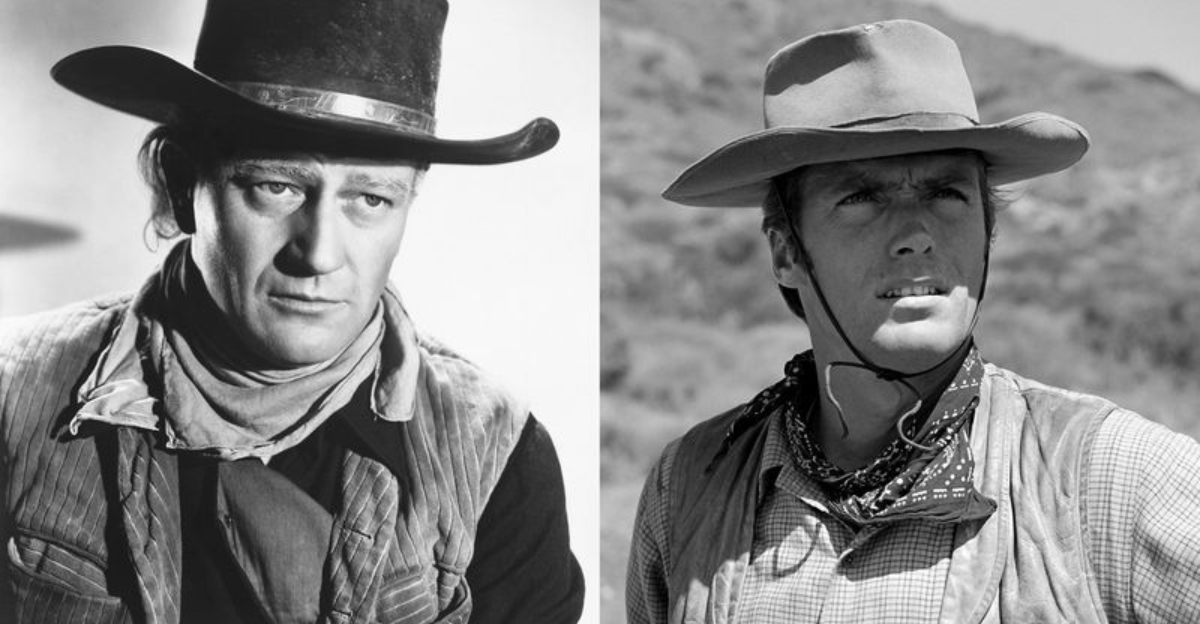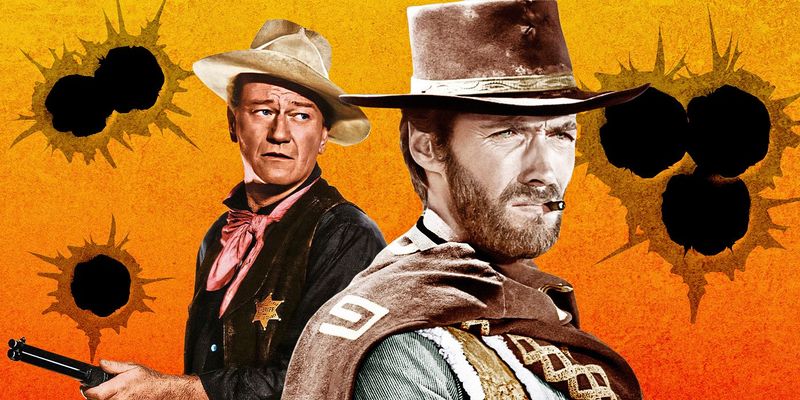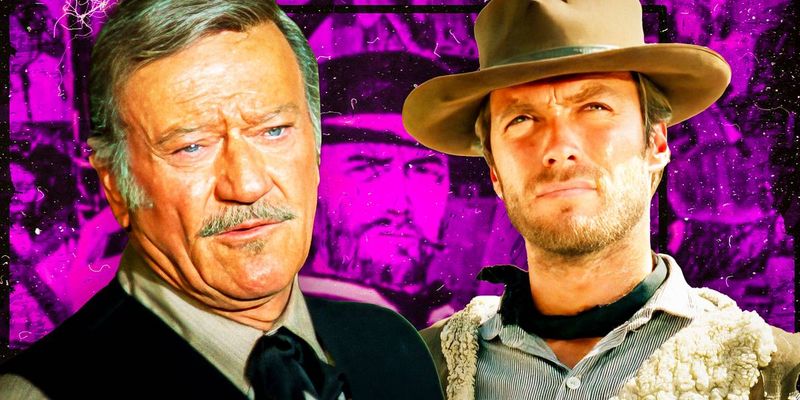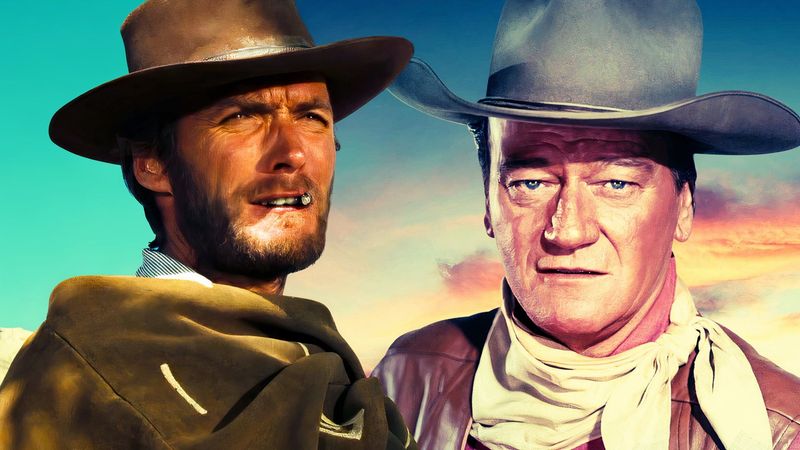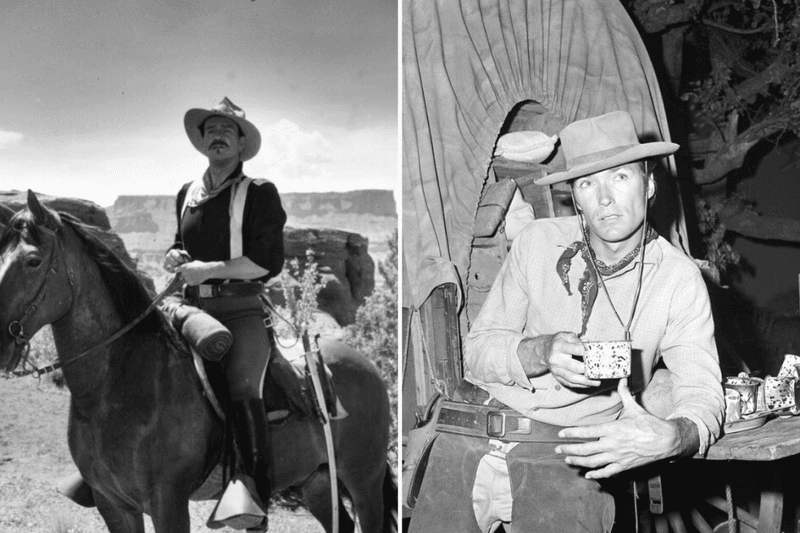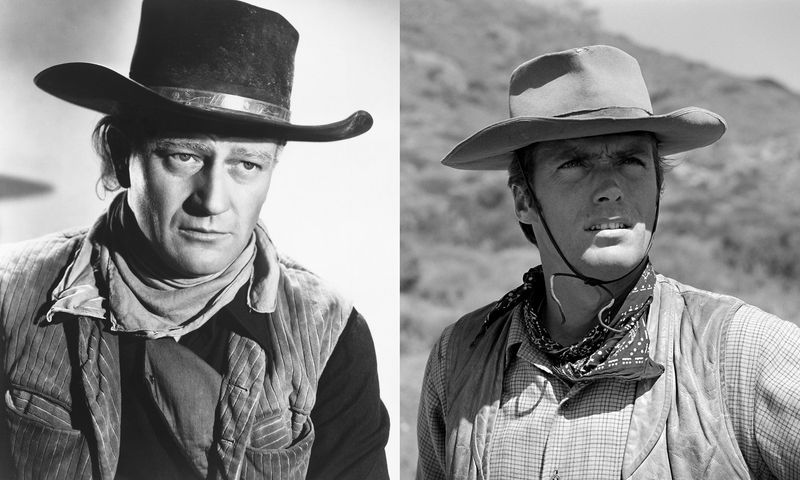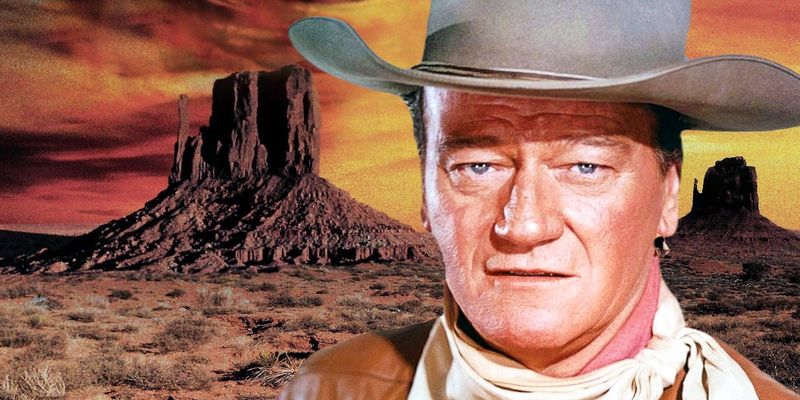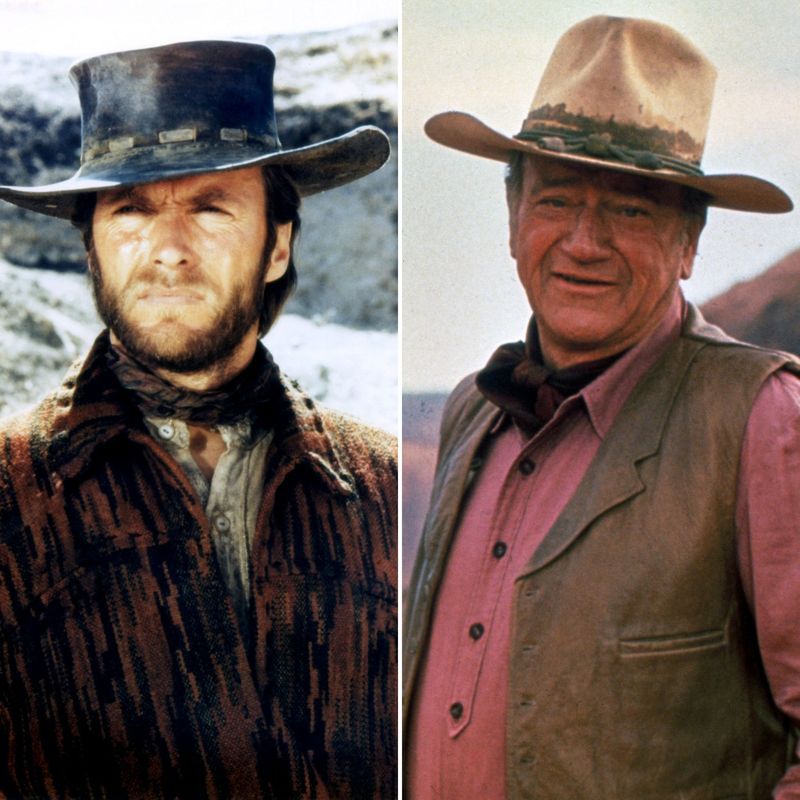John Wayne and Clint Eastwood, two titans of the Western genre, never shared the screen. Despite Eastwood’s rise as a major Hollywood figure, Wayne had his reasons for keeping his distance.
Their differing philosophies, styles, and perceptions of the Western film tradition created an insurmountable rift. Let’s explore the reasons why the Duke chose to steer clear of collaboration with Eastwood, despite their shared love for the American West.
1. He Hated the Way Eastwood “Rewrote” the West
John Wayne cherished the old Westerns’ clear-cut morality, where good and evil were distinct, and heroes wore white hats. Clint Eastwood, however, brought a gritty realism that blurred those lines, especially evident in High Plains Drifter. Wayne, a man of traditional values, viewed this as a distortion of the cherished Western iconography.
He saw Eastwood’s films as a threat to the genre’s purity, preferring the straightforward tales of justice and valor he was known for.
In Wayne’s eyes, the romanticism of the West was at risk, replaced by cynicism and moral ambiguity.
2. He Thought Eastwood’s Films Were “Anti-American”
Wayne was not just a movie star; he was an emblem of American patriotism. The Duke believed films should celebrate the country’s values, portraying heroes who embodied them. In a letter to Eastwood, Wayne criticized High Plains Drifter for its unflattering depiction of Western heroes.
To him, the film was an affront to the American spirit, presenting heroes as morally flawed and unheroic.
Wayne’s films, like The Alamo, glorified American ideals, a stark contrast to Eastwood’s more nuanced portrayals, which Wayne perceived as unpatriotic.
3. He Refused to Work with Directors He Didn’t Trust
John Wayne was a veteran actor with a specific vision, and trust was paramount when taking direction. Clint Eastwood, though talented, represented a new wave of directors challenging the status quo. Wayne was wary of Eastwood’s unconventional methods, fearing they might clash with his tried-and-true approach.
The idea of surrendering creative control to someone whose style was so disparate from his own was unsettling.
Wayne’s preference for directors who shared his vision and values made collaboration with Eastwood, who embraced innovation, nearly impossible.
4. They Represented Two Very Different Eras of Hollywood
John Wayne epitomized the golden age of Hollywood, where stars were larger-than-life and films upheld traditional narratives. Clint Eastwood, however, embodied the new, edgier Hollywood that emerged in the 1960s and ’70s. Their differing eras were marked by contrasting storytelling styles and on-screen personalities.
Wayne’s steadfast, heroic roles were miles apart from Eastwood’s more complex characters who inhabited moral gray areas.
As the embodiment of two distinct Hollywood epochs, their cinematic worlds rarely intersected, resulting in a cultural and ideological divide.
5. He Declined a Role in The Hostiles
A project proposed by Eastwood, tentatively titled The Hostiles, caught Wayne’s attention but not his approval. The film’s portrayal of Native Americans and the American West didn’t align with his ideals or on-screen image. Wayne was meticulous about the roles he chose, ensuring they reflected his personal beliefs and maintained his distinguished legacy.
Concerned about the film’s ideological stance, he declined the opportunity.
His decision underscored a commitment to roles that resonated with his sense of historical and cultural authenticity, rather than challenging them.
6. He Was Fiercely Protective of His Legacy
John Wayne’s career was built on a solid foundation of tradition, honor, and Americana. He was not merely an actor but a cultural icon whose image was meticulously crafted over decades. Working with Clint Eastwood, whose Westerns redefined heroism with rugged realism, posed a risk to Wayne’s carefully cultivated legacy.
He guarded his cinematic persona like a fortress, wary of any association that might tarnish it.
This protective nature meant avoiding collaborations that could lead to a reinterpretation of what he stood for, preserving his storied reputation.
7. Their Politics Were Similar—But Not Compatible
While both John Wayne and Clint Eastwood leaned conservative, their political views diverged in significant ways. Wayne was known for his unabashed, staunch conservatism, often championing traditional American values in and out of his films. Eastwood’s libertarian views, more flexible and less conventional, didn’t mesh well with Wayne’s rigid ideology.
This political discord added to their personal and professional distance.
Despite sharing some common ground, the ideological chasm between Wayne’s hardline stance and Eastwood’s nuanced approach proved too wide to bridge.
